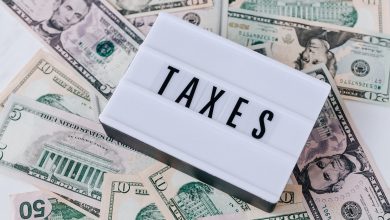
Imagine that you’re in line at the grocery store. As the cashier rings up the other customers’ items, their total payment and sales taxes show up on the register. Meanwhile, when it is your turn, the checkout employee deducts your taxes or refunds you the amount in cash. If you happen to live in one of the states with no sales tax, this situation may be common.
Many Americans consider the benefits of moving to these places. Yet, there are also certain obstacles. More specifically, states that don’t charge a levy on consumption will require residents to pay an income tax, instead.
Nevertheless, the absence of sales fees can influence economic growth. Such a policy will especially help the poor, even more so than middle-class and high-earning taxpayers. At the same time, residents of states with no sales tax don’t incur any of these expenses when they purchase products out of town.
The Flight of Capital
Governments establish sales taxes as a percentage of the total cost of a given transaction. For example, if a consumer buys a product for $500 and the levy is 5% (which is just below the national average), then they pay a $25 sales tax on their purchase.
At face value, a 5% or even 10% fee may look small. However, this is not the case when it comes to businesses that regularly acquire large or expensive equipment.
Manufacturers, as an instance, purchase machines that are worth tens, if not hundreds, of thousands. A $100,000 tool comes with a $5,000 tax when the rate is 5%.
Similarly, farmers and agricultural producers rely on tractors, trucks, and harvesting machinery. Even an additional 2% or 3% in costs can make or break their business goals.
Consumers in states with no sales tax requirements also benefit. Selling a car or old furniture becomes easier and not as costly.
In other words, incorporated companies are less likely to move their operations to a more business-friendly location. Moreover, the absence of consumption fines encourages out-of-state investments.
Low-Income Workers and States With No Sales Tax Laws
Assume that two customers walk into a store. One of them earns $100,000 per year while the other makes $25,000. Their hourly wages are $48 and $12, respectively. Both of them work 40 hours per week.
At the supermarket, they each buy vegetables, food, and household supplies for about $200.
When it’s time to pay, the 5% sales taxes are added to their purchases and their total amount comes to $210. The resident who makes $100,000 may not even pay attention to this. However, the ten dollars in taxes will carry a different weight for workers that make $12 per hour.
The unfortunate reality is that sales taxes disproportionately impact poor and low-income Americans. At times, middle-class households struggle because of this burden, especially when they buy a car or furniture.
Wealthier individuals, on the other hand, may not even notice the sales tax when they shop for retail products and other personal items.
Doing Business out of State
As mentioned earlier, traveling becomes less expensive when you don’t have to pay out-of-state fees. Companies are also exempt from paying sales taxes when they do business outside of their primary location.
This process further grows the local economy. Consumers can spend their money more freely while firms can reinvest their revenues to grow operations or hire more people in their town (as opposed to paying taxes to other states’ governments).
Hurdles and Obstacles
There is one main downside to living in states with no sales tax requirements. Residents must incur an income tax. After all, local governments have to make money one way or another.
The challenges, however, are not as burdensome as they seem. In fact, many businesses and consumers might prefer an income tax over a sales penalty. Mainly, this is because the former takes deductions and operational expenses into consideration.
To give an example, a retailer is deciding between two states to incorporate in. One of them will tax their sales and the other their income. Both locations have a 10% rate.
The retail company makes $800,000 per year in revenues. However, they also paid their employees $400,000 and spent another $100,000 on marketing. The lease to rent their store location costs an additional $150,000.
At the end, the business had an annual net income of $150,000 after they took care of these expenses.
If the 10% tax rate applied to their sales, the company owes the state government $80,000 (10% of their total proceeds). When we subtract that from their net earnings of $150,000, the retailer only has $70,000 remaining.
A 10% income levy, on the other hand, only adds up to $15,000 in taxes.
This factor, in itself, can determine where the retailer will incorporate. The difference between the two tax types may literally influence whether or not their business survives.
Which One?
Living in states with no income tax laws seems lucrative. Yet, a government that imposes fines on consumption and purchases may run into obstacles. Businesses will flee to other locations, poor people become worse-off, and capital may flow out of the state.
The next time you go to the grocery store, pay attention to the sales taxes. After that, add up these daily, weekly, or monthly expenses.
Are you truly better off without an income tax?




